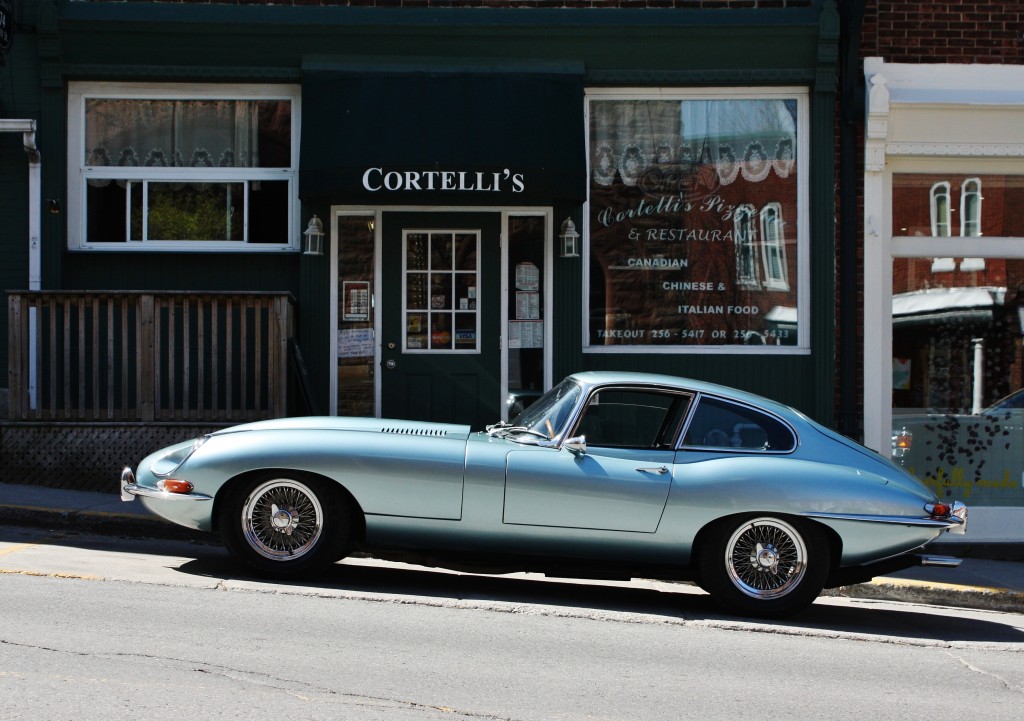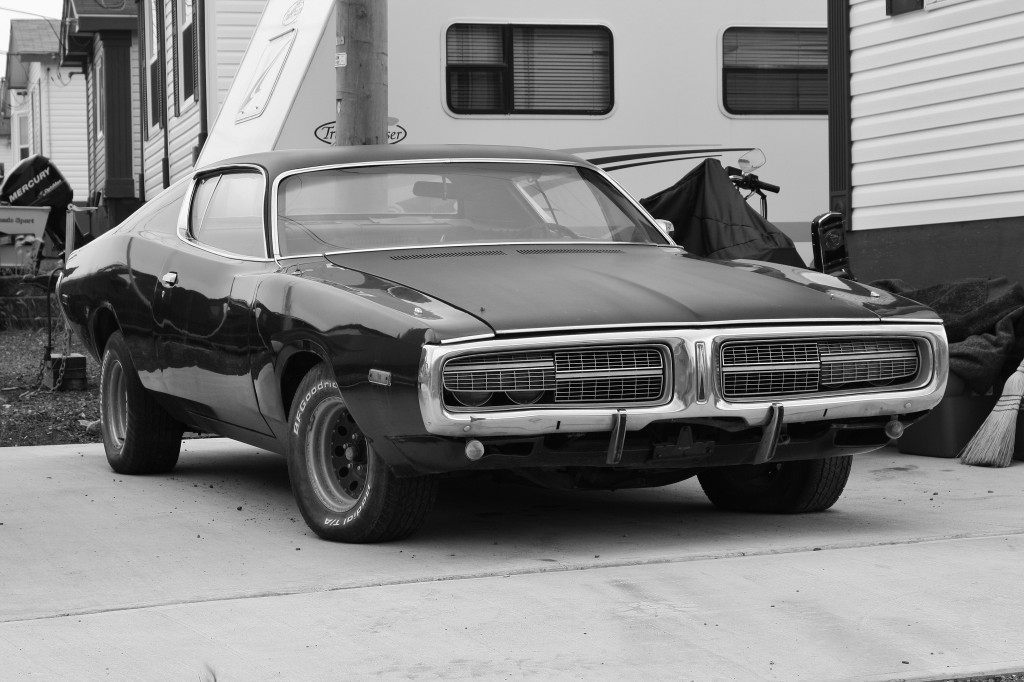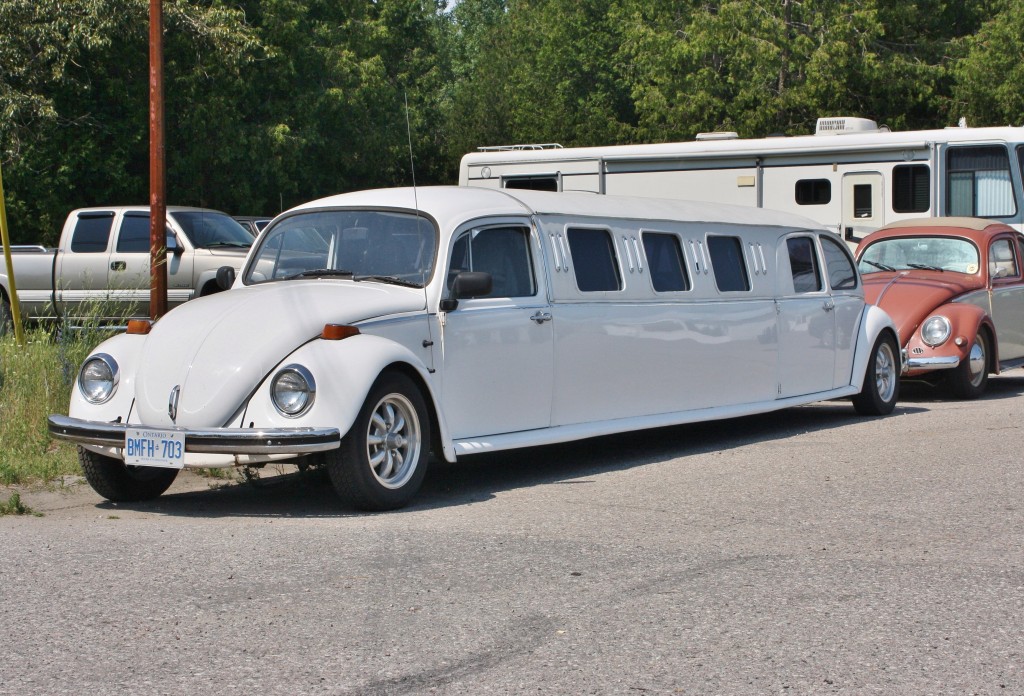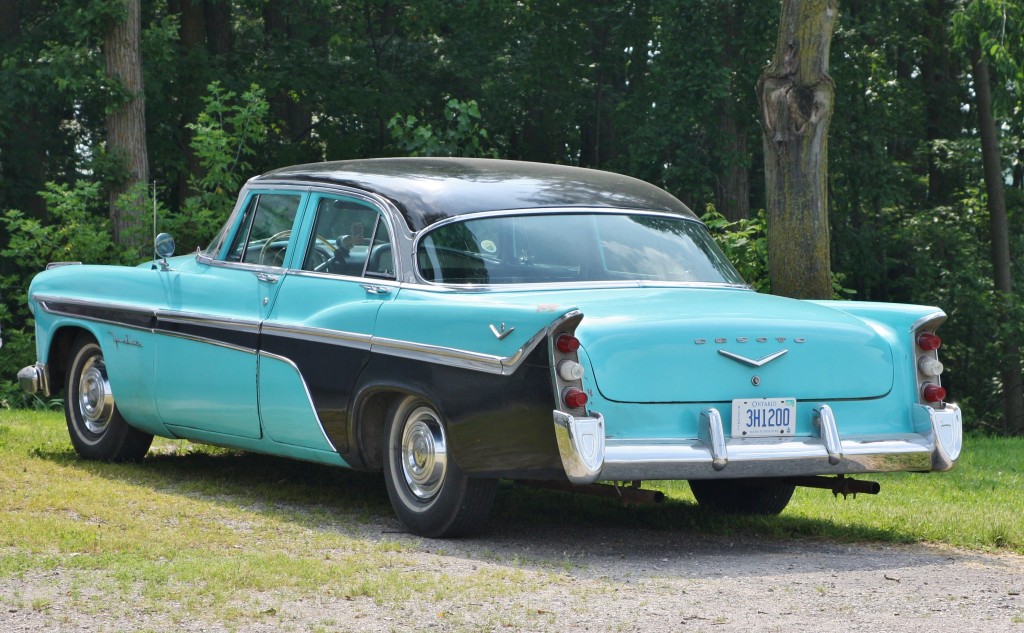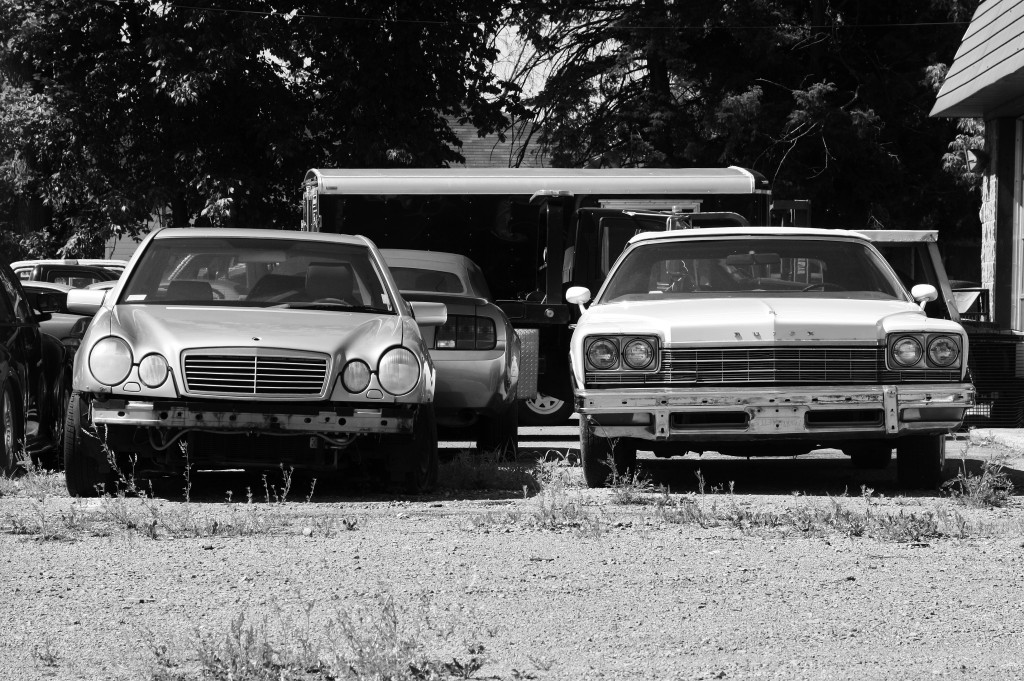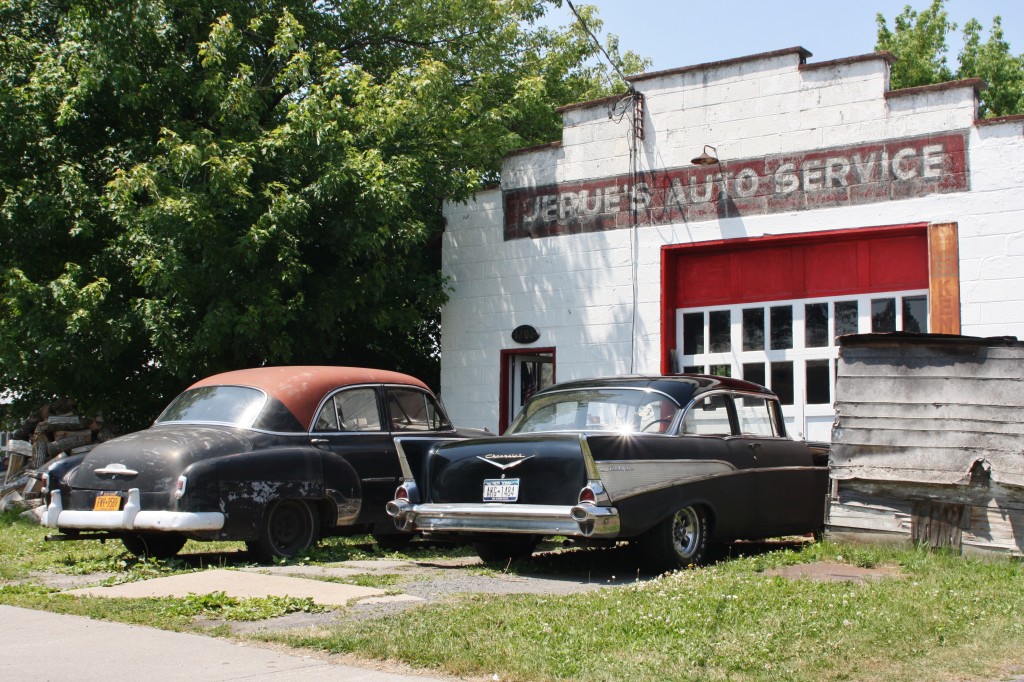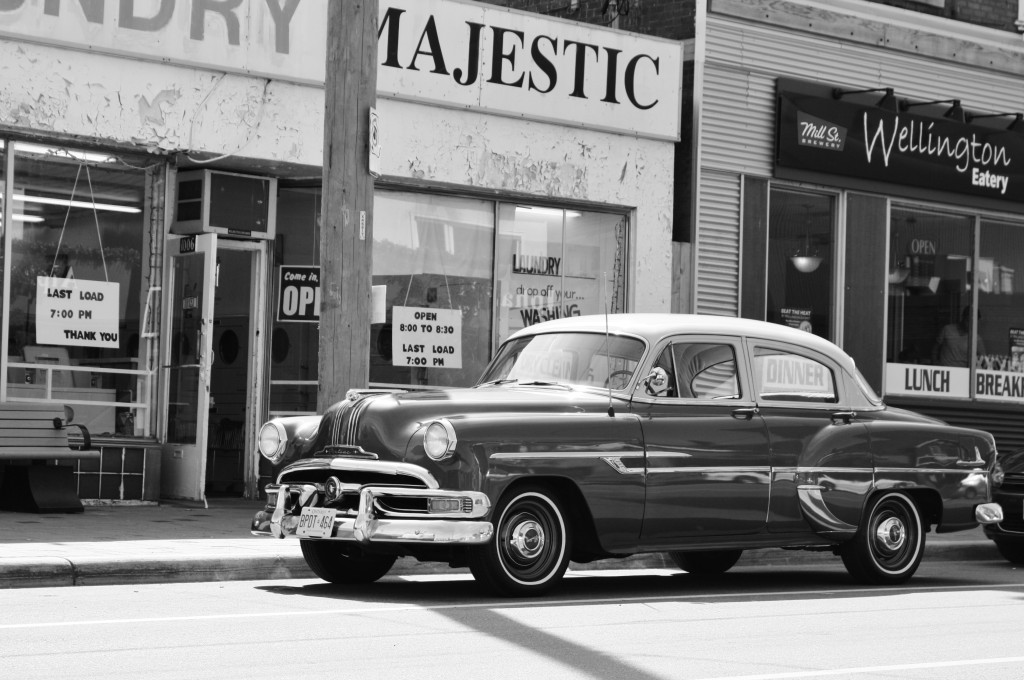Yumminah humminah!
No car in history exudes raw sex appeal like the Jaguar E-Type.
This lithe, curvaceous vehicle was to the British automotive landscape what the eradication of the censorship code was to British films.
When it appeared on the scene in 1961 with a hood 18 miles long, wire knock-off wheels, sumptuous leather interior and a throbbing, triple-carb straight-six making 265 horses and gobs of torque, mothers must have covered their children’s eyes.
No wonder it was chosen as Austin Powers’ ride (the ‘Shaguar’).
The spotless model seen here enjoying the sun in small-town Ontario is a Type 2 model, produced from 1968 to 1971. The dainty bumpers seen here were tossed aside as crash regulations came into effect in the early 70s, ruining the lines of many a vehicle.
Offered with a V-12 engine before its demise in 1975, the E-Type was always good looking, always fast (0-60 mph in 7.1 seconds in base 3.8-litre form, 6.7 seconds with the 4.2-litre) and remains desirable to this day.
The E-Type’s speed, refinement and unmistakable style led The Daily Telegraph to declare it the most beautiful car of all time in 2008, topping a list of 100 competitors.
Yup, I wouldn’t kick it out of my driveway for eating chips.
